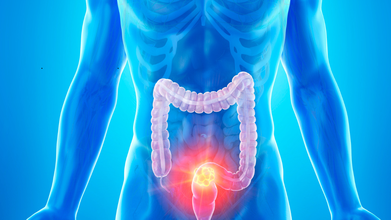- Health Conditions A-Z
- Health & Wellness
- Nutrition
- Fitness
- Health News
- Ayurveda
- Videos
- Medicine A-Z
- Parenting
How Do These New FDA-Approved Eyeglasses Treat Myopia?

Credits: Canva
The US Food and Drug Administration (FDA) has now approved the marketing of Essilor Stellest eyeglass lenses. It is now approved as a new treatment option designed to both correct myopia, which is nearsightedness and slow its progression in children between age 6 to 12.
What Is Myopia?
As pr the National Eye Institute, USA, nearsightedness is a refractive error that makes far-away objects look blurry. It happens when the shape of the eye makes light focus in front of the retina, which is a light sensitive layer of tissue in the back of your eye, instead of on it.
Myopia is also one of the most common vision conditions affecting children, and starts to worsen during the school years, when eyes are still growing. If left unchecked, progressive myopia can increase the risk of serious eye problems in adulthood, including retinal detachment, glaucoma, and early cataracts. Until now, the only FDA-authorized device for slowing myopia progression was a type of contact lens for children between 8 and 12 years old. Essilor Stellest lenses expand treatment to younger children, including those as young as six, and to those who may be unable or unwilling to wear contact lenses.
How Does The Lenses Work?
Unlike standard eyeglasses, these FDA-approved glasses have a unique design that allows a clear 9-millimeter central zone that corrects vision. It is also surrounded by multiple rings of small, raised lenslets. These lenslets create a “peripheral light defocus” effect, which alters how light focuses on the retina. Research suggests that this helps slow the abnormal eye growth associated with worsening myopia.
What Did The Studies Find?
The FDA’s decision was based on a clinical trial comparing Essilor Stellest lenses with conventional single-vision lenses. After 24 months, results showed:
- A 71 percent reduction in myopia progression (measured by spherical equivalent refraction).
- A 53 percent reduction in eye elongation (measured by axial length, an indicator of worsening myopia).
Importantly, no serious safety issues were reported. Some children experienced mild visual disturbances such as halos or blurriness, but these side effects were not considered severe.
A Safer and Easier Option
Experts emphasize that this approval offers families a practical, lower-risk alternative to contact lenses. Eyeglasses are generally easier for young children to manage, reducing risks of infection or misuse that can occur with contacts.
“Today’s authorization brings to market a treatment option that may meaningfully reduce the likelihood of severe eyesight issues later in adult life, while also being easier to use and lower risk than the currently authorized devices,” said Dr. Michelle Tarver, director at the FDA’s Center for Devices and Radiological Health.
China Reversed Its Air Pollution Problems; What Lessons Can Delhi Learn?

Credits: Canva
Delhi continues to wake up to thick haze on Wednesday morning, with 28 stations in 'poor' category, while nine stations remained under 'very poor'. Though there is a slight improvement as the average AQI stood at 269, in poor category. The Chief Minister of Delhi has enforced stricter measures like imposing fines up to Rs. 5,000 for open burning, and use of coal and firewood.
Delhi pollution has now affected people way beyond their respiratory health, it has now attacked almost all organs of their body, including fetus, reproductive health, liver, kidneys, and even chronic diseases like diabetes, obesity, blood pressure, and even mental health illness.
But could Delhi do more? Right now all the measures, including emergency measures like GRAP have not worked more than a dent. However, China seems to have reverse its pollution problem.
What Did China Do That Delhi Too Can Adopt?
In 2013, Beijing was battling with pollution problem. As per the data by the World Health Organization (WHO), in 2013, the annual means of PM2.5 levels reached 64.9 micrograms per cubic meter, whereas, in India, it was at 58.2. However, by 2019, China was able to bring it down to 38.15 micrograms per cubic meter while India remained at 50.17.
So, what did China do?
Since 2013, almost 80% of China has experienced air quality improvement. Beijing declared a war on pollution by shutting 3,000 coal boilers, which slashed coal use by 30%. It also forced factory to either close or comply with the guidelines. Clean energy also replaced soot and electric buses replaced diesel ones. The subway was expanded to 1,000 kilometers and by 2020, 40% of new cars were electric.
Chin's 11th Five Year Plan That Made Pollution A Priority
In the late 2000s, China began taking air pollution more seriously than ever. As per the UCLA Law professor Alex L Wang, China's 11th FYP (2006-10) made pollution a priority and used the "cadre evaluation system". This pushed officials to meet environmental targets. The system evaluates governors, mayors, and local leaders based on how well they perform compared to others in tackling pollution problem, which influences their promotions.
To cut pollution, China invested heavily in cleaner technology and shut down old, highly polluting factories such as power plants, smelters, and chemical units. The government also encouraged the shift to electric vehicles. Even though much of China’s electricity comes from coal, EVs still produce fewer emissions overall and create no tailpipe pollution in cities.
By 2017, Shenzhen became the first city in the world to fully electrify its 16,000 buses. Shanghai too followed its lead.
Studies by Tsinghua University and the Beijing Environmental Bureau showed that between 2013 and 2017, major improvements in air quality came from reducing coal boiler use, cleaner home heating, shutting down polluting industries, and controlling vehicle emissions.
The result was nothing less than remarkable. From 2013 to 2017, Beijing’s PM2.5 levels dropped by 35%, and life expectancy rose by 4.6 years.
What Men Should Know About Their Prostrate Health After 50, According To Doctor

Credits: Canva
As men step into their 50s and beyond, prostate health becomes an essential part of overall wellbeing. The gland naturally undergoes changes with age, many of which are not cancerous but can still cause discomfort, disrupt daily routines, and affect long-term health. Awareness, early screening, and preventive habits play a crucial role in staying ahead of potential problems.
Why the Prostate Changes With Age
One of the most common age-related concerns is benign prostate hyperplasia (BPH), a non-cancerous enlargement of the prostate. This happens due to hormonal shifts that cause the gland to grow slowly over time.
“Most men assume urinary symptoms are just a normal part of aging, but that mindset often delays treatment,” says Dr. Vineet Malhotra, Director and Founder, VNA Hospital. “BPH itself is not dangerous, but if ignored, it can seriously affect quality of life and even lead to complications.”
A larger prostate can press against the urethra, causing symptoms such as:
- Frequent urination
- Weak or interrupted urine flow
- Difficulty starting to urinate
- A feeling of incomplete bladder emptying
- Waking up multiple times at night to urinate
These symptoms often creep up gradually, making them easy to dismiss until they start interfering with sleep, work, or general comfort.
The Importance of Screening for Prostate Cancer
While BPH is not cancer, men must remain vigilant about prostate cancer, especially because its risk rises with age.
“Prostate cancer in early stages is usually silent,” explains Dr. Malhotra. “That is exactly why screening becomes so important once men cross 50.”
Two common screening tools include:
- PSA (Prostate-Specific Antigen) test
- Digital Rectal Examination (DRE)
These tests help detect abnormalities long before symptoms appear. Early detection not only improves treatment outcomes but also prevents unnecessary anxiety or uncertainty.
Men should also stay alert for red-flag symptoms, including persistent pelvic pain, unexplained weight loss, blood in urine or semen, and sudden urinary changes.
Lifestyle Choices That Support Prostate Health
Beyond medical screening, everyday habits have a strong influence on prostate wellbeing.
Dr. Malhotra emphasizes the role of lifestyle:
“A balanced diet, regular exercise, and maintaining a healthy weight can significantly reduce inflammation and support better prostate function.”
Healthy habits that help include:
- A diet rich in antioxidants (tomatoes, berries, leafy greens)
- Omega-3 sources like fatty fish and walnuts
- Limiting alcohol and caffeine
- Staying well-hydrated
- Avoiding smoking
- Regular physical activity
These choices not only support the prostate but also improve urinary health and hormonal balance.
Since stress can worsen urinary symptoms, incorporating yoga, meditation, or deep-breathing practices also makes a noticeable difference.
Breaking the Silence Around Prostate Health
One of the biggest challenges is the reluctance many men feel when discussing urinary or sexual symptoms.
“Men often suffer quietly because these issues feel too personal,” says Dr. Malhotra. “But silence delays diagnosis and treatment. Open conversations can literally save lives.”
Families, caregivers, and partners can play a supportive role by encouraging early checkups and normalizing discussions around prostate health.
The Bottom Line: Proactive Care Matters
With rising life expectancy and a more active older population, prioritizing prostate health is no longer optional—it’s essential.
Early diagnosis, informed decision-making, and evidence-backed treatments give men the chance to maintain independence, comfort, and quality of life well into their later years.
As Dr. Malhotra puts it, “Prostate health is not just a medical concern—it’s a foundation for staying energetic, confident, and healthy as you age.”
40s Bring Lots Of Changes, Says Doctor, Take Care Of Your Bone, Joint And Urinary Health

Credits: Canva
Crossing 40 often brings subtle but noticeable changes in how your body feels and functions. Many people brush off early signs like morning stiffness, reduced flexibility, or frequent bathroom visits, not realizing these are part of natural age-related changes. These shifts primarily affect the bones, joints, and urinary system, areas that quietly define everyday comfort.
According to Dr. Aashish Chaudhry, Managing Director & Head, Orthopedics & Joint Replacement, Aakash Healthcare, these changes are expected but shouldn’t be ignored. “After 40, the body’s regenerative capacity slows down, particularly in bones and joints. Being aware of these changes helps in early prevention and better long-term outcomes,” he says.
Bone Health: Slower Regeneration and Higher Risk of Fractures
Bone density gradually declines with age due to hormonal changes. Women experience a drop in estrogen, and men see reduced testosterone levels—both crucial for supporting bone formation.
“Lower hormone levels weaken the natural bone-building cycle,” explains Dr. Chaudhry. “This increases the risk of fractures and even slows down healing when injuries occur.”
Key concerns include:
- Reduced bone density
- Higher risk of osteoporosis
- Slower fracture recovery
To counter this, weight-bearing exercises and strength training are crucial. A diet rich in calcium, vitamin D, and protein supports bone metabolism and maintains strength.
Joint Health: Wear, Tear, and Early Stiffness
Years of repetitive movements, combined with declining collagen production, make joints more vulnerable. Cartilage becomes less elastic, leading to stiffness, reduced mobility, and the early onset of osteoarthritis.
“Many people notice joint pain but assume it's just fatigue,” says Dr. Chaudhry. “In reality, early joint wear can be detected and managed much earlier with the right interventions.”
What contributes to joint discomfort after 40?
- Natural wear and tear
- Reduced cartilage elasticity
- Slower lubrication of joint spaces
- Early degenerative changes
Flexibility-focused exercises like yoga or stretching, along with anti-inflammatory foods such as leafy greens, berries, nuts, and omega-3 sources, can ease stiffness and protect long-term mobility.
Urinary Changes: More Common Than You Think
While both men and women experience changes in urinary patterns, men often notice symptoms more prominently due to prostate enlargement. A bigger prostate narrows the urinary passage, causing:
- Frequent urination
- Weak urinary stream
- Urgency or incomplete emptying
- Night-time urination
Women, on the other hand, may struggle with pelvic floor weakness, leading to leakage or urgency.
Dr. Chaudhry notes, “These symptoms are common after 40, but they shouldn’t be normalized. Early evaluation can prevent chronic discomfort.”
Hydration remains essential. Cutting back on caffeine, alcohol, and salty foods can also lighten urinary symptoms and prevent kidney irritation.
Lifestyle Adaptations That Make a Real Difference
Shifting from reactive to preventive care is key after 40. The goal isn’t to stop ageing—it's to age comfortably and confidently.
What helps:
- Strength and mobility exercises
- Pelvic floor training
- Maintaining a healthy weight
- Regular health screenings (bone density, kidney tests, prostate evaluation)
- Stress management through yoga, meditation, or deep breathing
- Consistent sleep routines to support tissue repair
“Think of this stage as preparing your body for the next decades,” says Dr. Chaudhry. “With the right lifestyle adjustments, most people can maintain excellent mobility and function well into older age.”
© 2024 Bennett, Coleman & Company Limited

